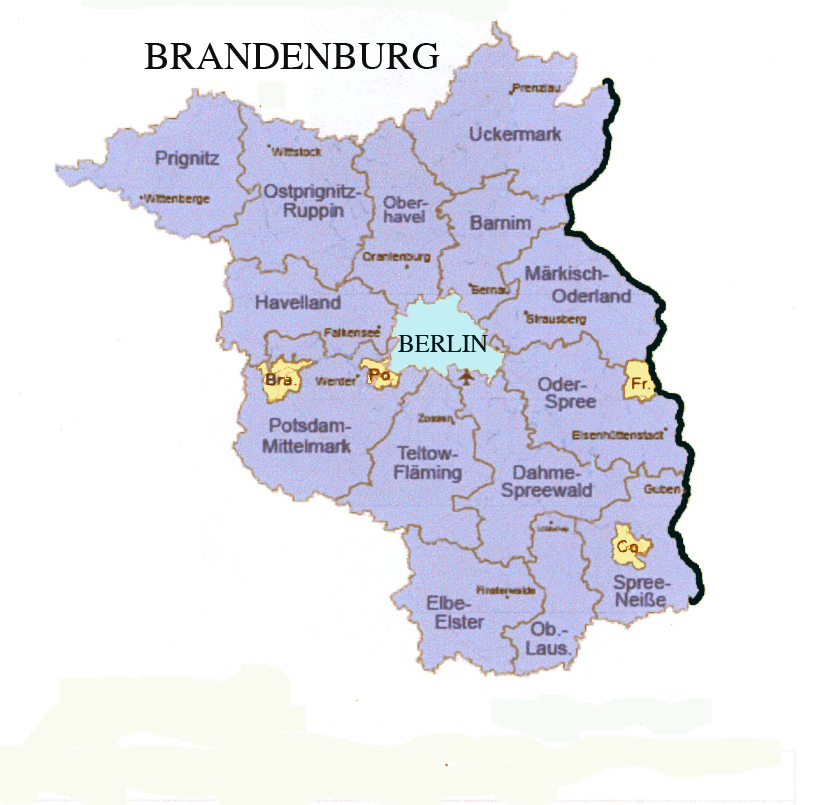German Emigration to Borodino, Bessarabbia, Russia: 1812-1840s.
Last Updated: 27 May 2012

Brandenburg State Districts created
in 1968
|
xx | xx |
Earlier in time.
Brandenburg was a territory known as "Magna Germania" that touched the Vistula River, which was the border line between the Germanic people and the Slavic (the two major groups were the Hevelli in the west and the Sprevane in the east). The constant waring between the Slavs caused the borders to constantly change. Albert "the Bear" was granted the Northern March by Emperor Lothar III of Supplingurg, the Holy Roman Emperor (1133 to 1137). Albert had inherited the town of Brandenburg and the Hevelli lands from Pribislav, the last Wendish ruler, in 1150. And it was Albert who proclaimed himself the new Margraviate of Brandenburg and his descendants the "Ascanians" (House of Ascania, known also as the House of Anhatt). He has already inherited the Dukes of Saxony (House of Billung) property.... By 1237 Albert's grandson founded the two villages of Coelln and Berlin. By 1320 the House of Ascanians rule of Brandenburg ended. From 1325 to 1415 Brandenburg was in the hands of the Wittelsbachs of Bavaria. Next came the rule of Luxembourg. In 1415 Frederick I (IV) (House of von Hohenzollerns), was granted the status of Elector of Brandenburg... After the death of his brother Johan II, Frederick added the rank of Margrave of Brandenburg-Kulmbach. After 1427 the title of Burgrave of Nuremberg merged with the titles of Margrave of Brandenburg-Ansbach and Margave of Brandenburg-Kulmbach. By 1543 George Frederick I held the titles of Margrave of Brandenburg-Kulmbach, Duke of Brandenburg-Jaegerndorf and Regent of Prussia. On 2 Dec 1791 Christine II sold the sovereignty of his principalities to King Frederick Wilhlem II of Prussia. Then the year 1701 arrived and Frederick I gave himself he title of King "in" Prussia..... Napoleon marched into, through and into Russia and the Holy Roman Empire was eliminated. The House of Hohenzollern would continue to rule Prussia and help defeat Napoleon. Prussia would lead the Germans to victory and create the German Empire in 1871. They would be given the title of Emperor and would rule to 1918. Despite the lost of the crown, the House of Hohenzollern continues to whole claims to the throne of Prussia and the German Empire. Their official claims are not recognized by the Federal Republic of Germany. Prince Chrisian Friedrich is the head of the House of Hohenzollern since 1994. They are still at the top of societies' ladder in Germany.
The place of origin is their castle of Hohenzollern which is near
Hechingen / Tuebingen, Baden-Wuerttemberg. See photos:
Timeline can be found at: http://www.genealogienetz.de/reg/BRG/bb.html#hist